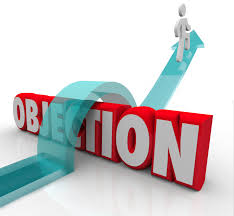Effective Techniques for objection Handling-Ultimate Guide is an integral part of the selling process. Objections are not rejections and should not be taken personally. Rarely can you find sales taking place without objections? The buyer must feel comfortable that the purchase will benefit him and his organization.
A buyer is always anxious to avoid a wrong or bad purchase which could end up in a loss of goodwill, Time or money. This doubt or lack of confidence brings out objections. There are typically generated through a lack of information being passed to the prospect; through misunderstanding or a lack of trust in the salesperson or product or company.
In fact, Objections help to close the sale because they point the salesperson in the direction that is most important to the buyer.
Objections are only questions asking for more information. We need to understand the purpose of an objection and develop a system or process on how to respond to or handle it.
Objections, by and large, fall into the following categories:
- Unsure of the need or no need- I am really not interested or I Have no need at all
- No money- It’s too expensive
- Lack of Incentive to buy now – What the rush or urgency?
- Happy with the existing position- I really don’t need to change my suppliers
- Don’t have the time, send me some information.
- Lack of trust to buy from you, your company or your product – I want to think it over.
The most important thing is to find out the real objection. Don’t get sidetracked by petty issues. You may win the battle but lose the war.
Whenever there is hesitation from the prospect, it is very crucial to understand what is going through his mind. One needs to probe further, tactfully.
· What seems to be your concern?
· What causes your concern?
· Would you mind sharing your reservations?
· Why do you feel that way?
Accept that objections are going to come up in every situation, no matter what; the purpose of handling objections is to reduce resistance and address corners. There is a clear difference between objection, Condition, and excuses. Sometimes, resistance is voiced and sometimes it’s not. The worst kind of objection one is the one that is not brought out in the open or hidden resistance – the one that actually prevents the buyer from taking actions, but which is not verbalized. There are a few steps we can use to solve that.
- Confirm: Clarify to make sure you understand and answer the real objection and not just the surface objections.
- Isolate: Now you want to find out if it is the real objection and if there is anything else that will prevent the prospect from placing an order.
- Empathize: A degree of empathy with the prospect at this point can build a rapport and create a common feeling that diffuses the prospect Objection. Empathy helps you to put yourself in the other person’s shoes and enhances the strength of the relationship.
- Answer: To answer always use this 3F’s formula that is feel, felt and found.
- Reconfirm the Answer: Reconfirm means that the objection has been answered completely to the prospects satisfaction and he accepts it. This process is to ensure that the same objection does not reappear later at the time of closing.
- Trial Close: Once you reconfirm the answer always go for the trial close.
- Closing: Seize the moment now and go for the close. If you have answered the objections of the prospect satisfactorily, then this is the right time to close.
Conclusion: To a well-prepared professional, every objection is an opportunity to close. They turn setbacks into comebacks. Here a good professional’s persuasive skills come into play and the real selling starts when the prospect gives him an objection.
Whenever a person gives an objection to what he is really saying is, I am not satisfied, I am not convinced, Try Harder, give me more information or compelling reason to buy. On hearing an objection, a good professional feel encouraged because this is his opportunity to convince and use his time-tested principle of selling.
Remember, Wise people, build homes with stones that are thrown at them.
I also have a blog on Sales closing Techniques - 5 Steps.
About my blog on Effective Techniques for objection Handling-Ultimate Guide. If you have any suggestion please leave the comment below.

Hey thеre! This iss kind of off topic but I need some help from an establkiѕhed blօg.
ReplyDeleteIs it difficult tⲟ ѕet up your own blog? I'm not very techincal but I can figure things out pretty quick.
I'm thinking about setting up my own but I'm nott sure where to start.
Do yߋu have any points or suggestiօns?
Tһank you